Tags
Alfredo Bringas, Ana Gabriela Fernández, Barbara Scales, Cafe Tacuba, Carlos Chavez, Gabriela Ortiz, James Bond SPECTRE, Mario Lavista, Masako Okamura, Mexico, Mexico City, Miguel Zaragoza, Palacio de Belles Artes, Raul Tudon, Ricardo Gallardo, Ricardo Rozental, Tambuco Percussion Ensemble, William Kraft
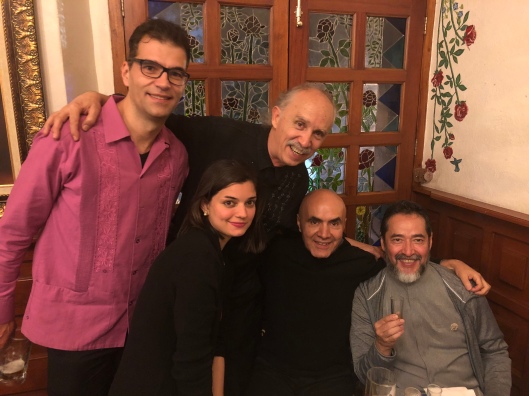
Tambuco celebrates 25 years, with guest pianist Ana Gabriela Fernández.
“The spirit of percussion opens everything, even what was, so to speak, completely closed.” – John Cage
Ricardo Gallardo and I have been partners in new music projects for a long time. We got started because of an introduction by American icon William Kraft, have received four Grammy nominations for our collaborative CD recordings, Southwest Chamber Music toured México multiple times, at UNAM and in Guadalajara, Tambuco has come to Los Angeles multiple times, to both Herbert Zipper Hall at the Colburn School and REDCAT in Walt Disney Concert Hall.
We’ve even tracked each other down in Japan!
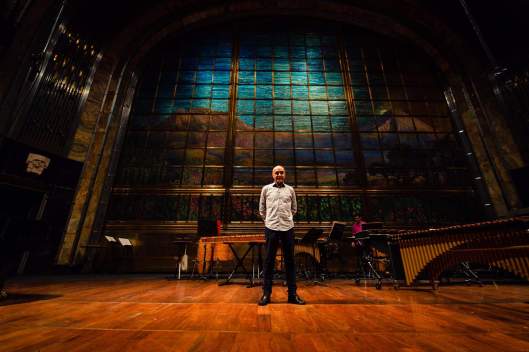
Ricardo Gallardo, Tambuco’s founder, at the Palacio de Bellas Artes (photo by José Pita Juárez).
”Jeff, would you be willing to speak about Tambuco for our 25th anniversary and our many mutual projects at a pre-concert talk at the Palacio de Bellas Artes?” was a nice way to start my day in Facebook Messenger last month. My answer to Ricardo’s request was an obvious and enthusiastic yes. Contributing to the 25th anniversary festivities of Tambuco would be an honor and a joy.
My wife Jan and I had put the November 3rd, 2018 Tambuco 25th anniversary concert on our calendars as soon as we knew the date. Coupled with a family wedding in New Orleans (see my post of November 21) the Tambuco date also allowed us to go to México for our first opportunity to experience the Day of the Dead in Oaxaca, the home town of Ricardo’s mom (posts coming soon). So we of course were able to attend!
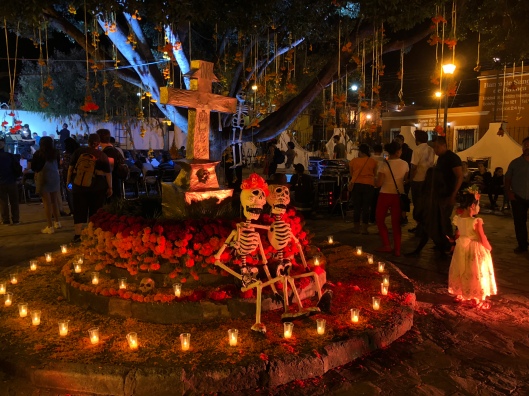
The Day of the Dead in Colonia Xochimilco, Oaxaca.
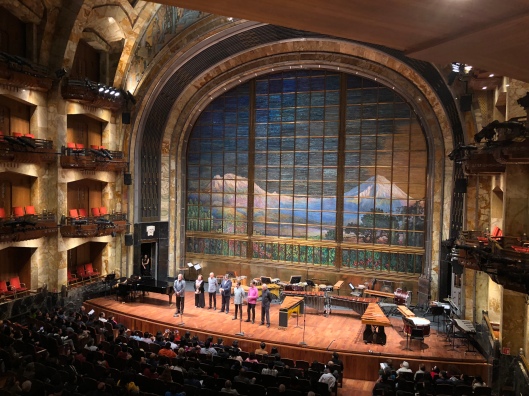
Speaking about Tambuco at the amazing Palacio de Bellas Artes.
“Percussion is completely open. It is not even open-ended. It has no end.” – John Cage
Twenty five years is a long time for any chamber group. But let me be honest – it is an eternity for a percussion quartet. Trust me, theirs is a career not only of hard work and countless hours of practice, commissioning an always new repertory. Their career is also one of very expensive and often delicate furniture moving. Furniture moving that demands the precision of a Swiss watch maker. The organizational skills of precisely requesting every last instrument, from a lone pitched gong for one concert to four matched marimbas for another to random found objects for yet another makes organizing their equipment recipe daunting. For twenty five years, just think about it!
Add to this equipment recipe the organizational skills needed for Tambuco to travel the globe in ways that truly no other ensemble approaches. Lebanon, Jakarta and Bali in Indonesia, Riyadh in Saudi Arabia, Paris, Vienna, regular tours to Japan, all of South America, Shanghai, Hà Nội, Los Angeles with Southwest at REDCAT and the Colburn School, Cairo in Egypt, you name it, there is a good chance Tambuco has played there, and multiple times. Passports, regular cliffhanger visa applications, currency exchange and often impressive jet-lag (how often do you go from Japan to Colombia or Jakarta to Las Vegas in the same month?) are also an accepted reality.
And, unlike many well known string quartets, they still travel together!

Tambuco in Egypt.
Last but not least there is their home town base of México City, where Tambuco provided the coup-de-grace music for the largest and now legendary opening sequence of the James Bond franchise, Spectre. “Are those marimbas I hear in the Zocalo, Mr. Bond?”
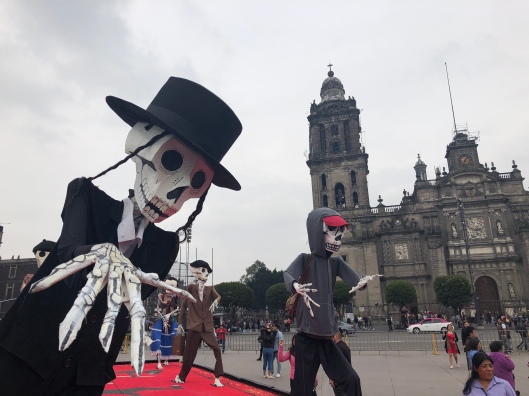
Spectre props in the Zocalo are now a feature of México City’s Day of the Dead celebrations.
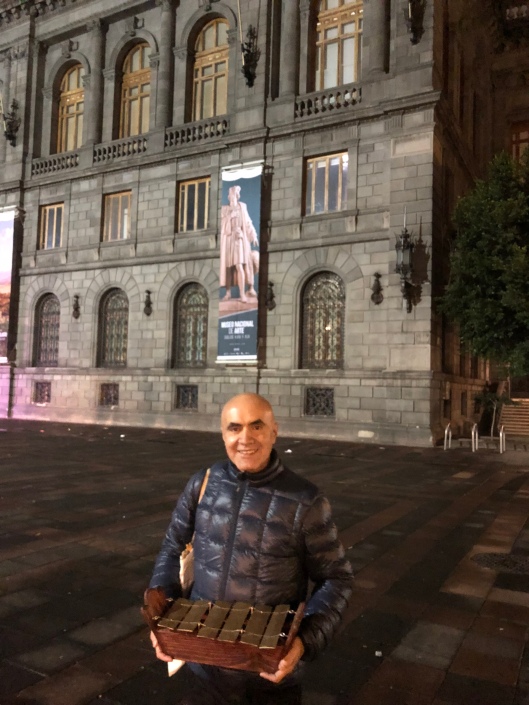
Ricardo pointing out the exact Tambuco location spot for Spectre.
And to create this global ensemble based in México, a country born with good rhythm, Ricardo is joined by mutual friends, all virtuosic musicians and percussionists: Alfredo Bringas, Miguel González Zaragoza and composer/percussionist Raul Tudón. They are a perfectly matched and inspiring foursome, the equal of any legendary string quartet.

Alfredo Bringas (photo by José Pita Juárez).
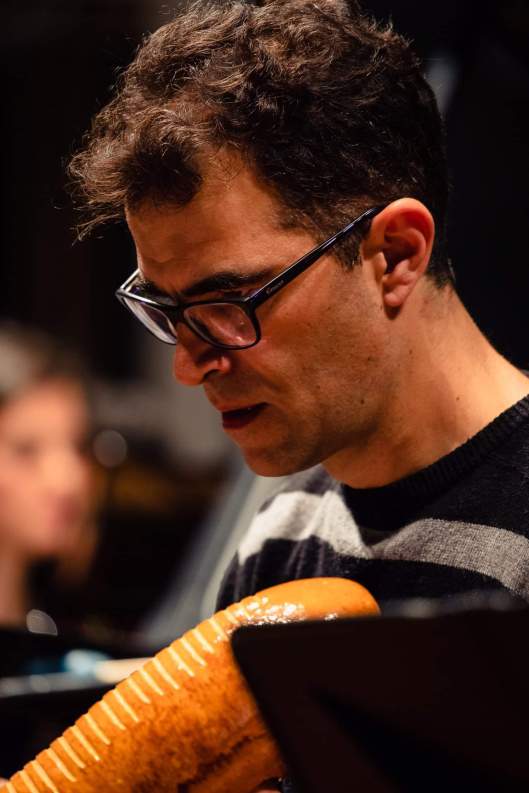
Miguel González Zaragoza (photo by José Pita Juárez).
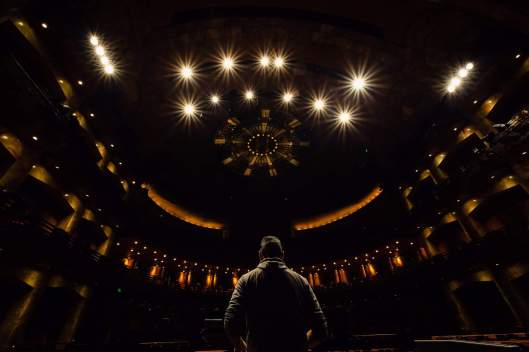
Composer/percussionist Raul Tudón in a dramatic photo in the Bellas Artes (photo by José Pita Juárez).
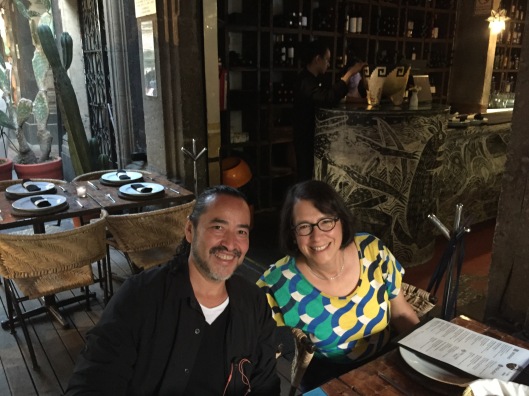
Raul and Jan smiling together at Los Danzantes in Coyoacán.
“Percussion is not like the strings, the winds, the brass (I am thinking of the other sections of the orchestra), though when they fly the coop of harmony it can teach them a thing or two. If you are not hearing music, percussion is exemplified by the very next sound you actually hear wherever you are, in or out of doors or city. Planet?” – John Cage
Cage was instinctively right – percussion was the medium creating a cultural shift in music. Used briefly, perhaps only tolerated, in the 18th and 19th century western symphony orchestra as the sounds of “other” cultures, Turkish cymbals or Chinese gongs or Spanish castanets, these once exotic instruments remained in the background of our aural palette until the 20th century.
But that would change, and change it did in Paris in 1899.
As Claude Debussy would say upon hearing Indonesian gamelans in Paris: “Javanese music obeys laws of counterpoint that make Palestrina seem like child’s play and if one listens to it without being prejudiced by one’s European ears, one will find a percussive charm that forces one to admit that our own music is not much more than a barbarous kind of noise more fit for a traveling circus.”
There’s been no going back ever since.

The gamelan players heard by Debussy in 1899 in Paris.
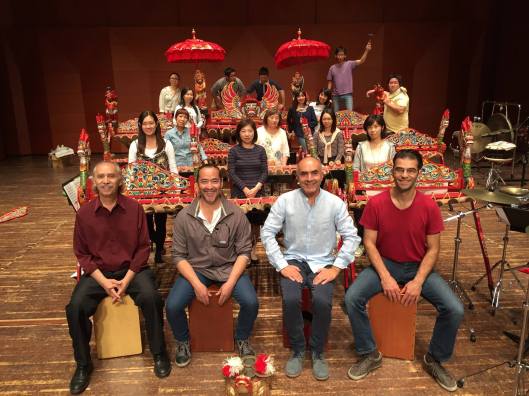
Tambuco in Japan with a wooden gamelan ensemble in Nagoya.
I have a few listening assignments for friends who ask me how to crash the party of new music, to achieve a sense of familiarity, hopefully joining my love for music they find initially confusing. So here is one recommendation I give an ideal listener: take our Southwest/Tambuco CD project of William Kraft’s Encounters series and listen to all three CDs, all at once, a few times, (about three hours).
The pay off, you ask?
You’ll begin to hear the melody of percussion, that the way a cymbal is struck or gong scraped or vibraphones bowed or maracas shook makes all the difference in the world. Just like in tune string playing. I have never observed a music critic calling out a percussion section for bad mallets or lousy cymbals.
You need to experience these metallic and wooden sounds in the foreground. They can take you to a world beyond category. It’s odd, but a percussion piece by Xenakis goes over easily with an audience, where a string quartet piece by the same composer would horrify any public radio time slot (I’m looking at you, NPR or KUSC). (In fairness, NPR or KUSC aren’t concerned about broadcasting any Xenakis piece at all….but that’s another blog post entirely).

Tambuco rehearsing with guest pianist Ana Gabriela Fernández (photo by José Pita Juárez).
The program for Tambuco’s 25th anniversary included percussive barn storming pieces, a delicate work featuring the glass harmonica by iconic Mexican composer Mario Lavista, a transcription for four marimbas of the Ravel String Quartet second movement, played from memory, and two new pieces by Tambuco’s Raul Tudón and Ricardo Gallardo.
I am not a critic and wouldn’t review friends if I was. But let’s just say a capacity audience at the Palacio de Bellas Artes was enthusiastic and elated with numerous bows and encores!

Four marimbas for Ravel.
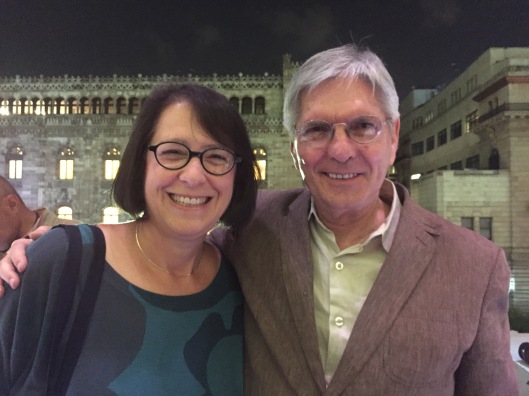
Jan with Mario Lavista (not Harrison Ford).
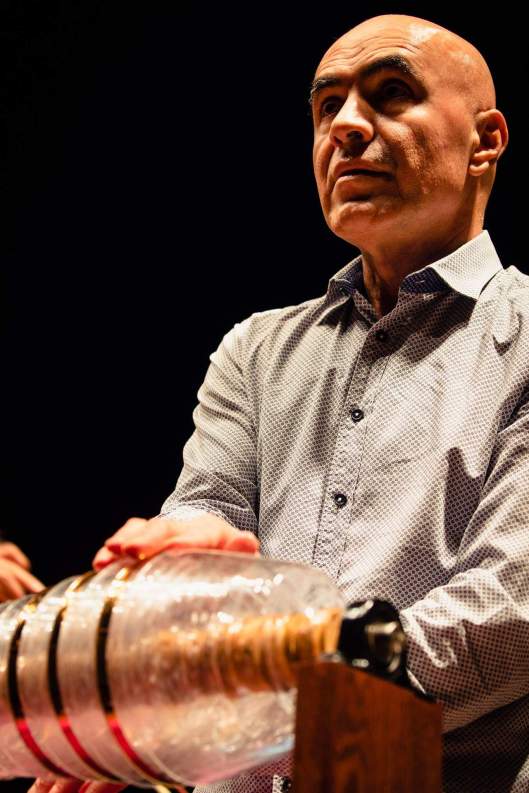
Ricardo Gallardo and the glass harmonica for Lavista (photo by José Pita Juárez).
Two Vortices and a Ghost, the final work on the concert by Ricardo Gallardo (the composer), featured a beast of a piano part. A ton of notes played solo and fast as hell, a fearless guest artist was needed. I don’t know where Ricardo found her, but the young Cuban pianist Ana Gabriela Fernández, who now lives in México City, is a true find. Ana has a heart of gold, an impressive technique and positive attitude. Fitting inside Tambuco is daunting for any musician, but certainly even more so since this was the first time Ana played at the prestigious Palacio de Bellas Artes.
She soared!
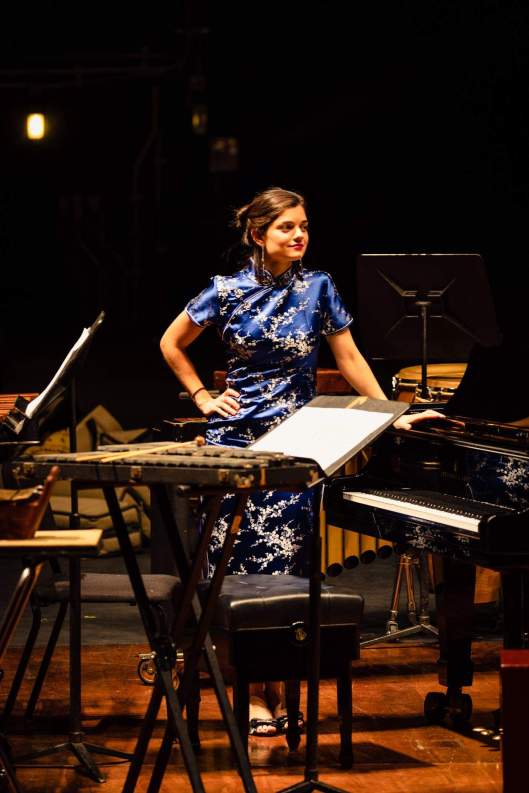
Predicting a bright future for pianist Ana Gabriela Fernández (photo by José Pita Juárez).

Jan and Ana at Cafe Tacuba for a joyous post concert dinner.
After the concert we walked down the street from the Bellas Artes to a México City legend, Cafe Tacuba, which opened in 1912 and serves continuously twenty four hours a day. You can file Cafe Tacuba away as a must stop, and Fun Fact: most everybody ordered the Enchiladas Tacuba. Which tells you something about the place, if Tambuco goes there for this auspicious occasion. Enjoy the following post concert photo gallery!
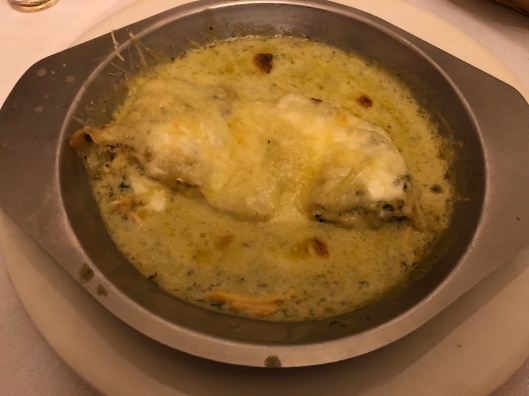
Victory dinner was Enchiladas Tacuba.

Miguel González Zaragoza and his wife Gloria Pulido.
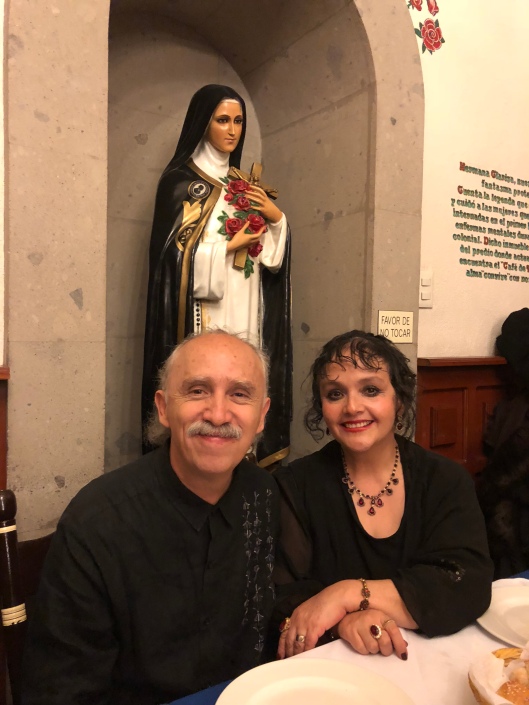
Smiling and happy, Alfredo and Monica Bringas.

Author Ricardo Rozental from Bogotá and Tambuco’s manager from Montreal, Barbara Scales.
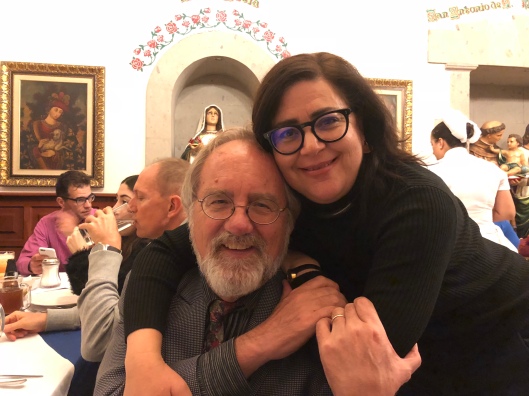
A big Cafe Tacuba hug from my Mexican sister, Gabriela Ortiz.
There will be more chapters between me and Tambuco, of that I have no doubt. We both spend a lot of time in Asia, and Ricardo is fond of saying “Nothing is random.” Fun Fact: his airplane pilot brother already lives in, wait for it, Hà Nội, so you might not need to read between the lines.
Music, like our life or society or commerce or transportation or energy, is constantly evolving. We benefit from a constant blend of change and stability, in equal, or at least complementary, doses. And with percussion, all we’re doing is a common sense exploration of the oldest and then newest sounds on earth with nothing in between.
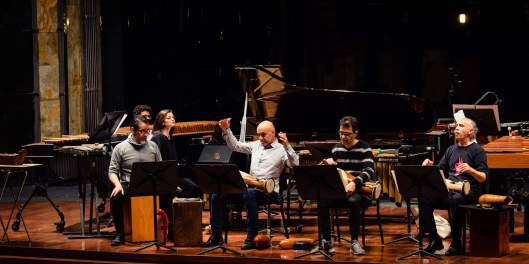
Tambuco and Ana Gabriela Fernández in rehearsal (photo by José Pita Juárez).
”The strings, the winds, the brass know more about music than they do about sound. To study noise they must go to the school of percussion. There they will discover silence, a way to change one’s mind; and aspects of time that have not been put into practice.” – John Cage
Cage passed away in 1992. Maybe it’s time we put into practice the aspects of time he predicts. With luck we will discover silence as a purposeful void. And if we do, we’ll discover this place through the melody of percussion.
Here’s to another 25 years for my friends in México and a few more chapters between us yet to be written. And many thanks to the photos of José Pita Juárez for the wonderful photos from the Palacio de Bellas Artes!
Viva Tambuco!
Best, best, best,
Jeff

Reblogged this on HANOI NEW MUSIC ENSEMBLE — NHÓM NHẠC ĐƯƠNG ĐẠI HÀ NỘI and commented:
Enjoy this blog posts about my colleagues the Tambuco Percussion Ensemble in Mexico City, who have already performed Nguyen Thien Dao and Vu Nhat Tan, as well as regular tours to Japan and Indonesia!